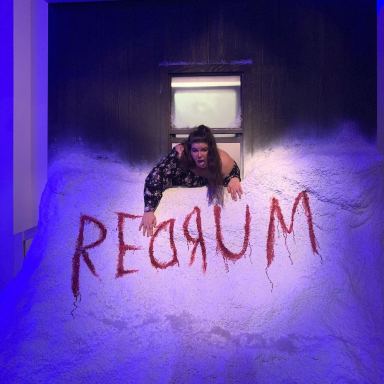36+ Dracula Movies
Count Dracula, a Transylvanian noble, is the most famous vampire. These are the Dracula movies from the 1920s to today.
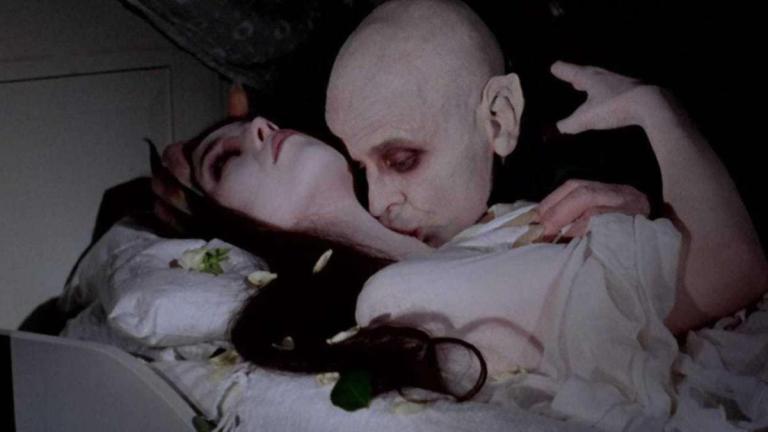
Table of Contents
Let’s clear up any confusion between the general concept of vampires and the fictional character Count Dracula, because although they are often conflated, they are two different characters.
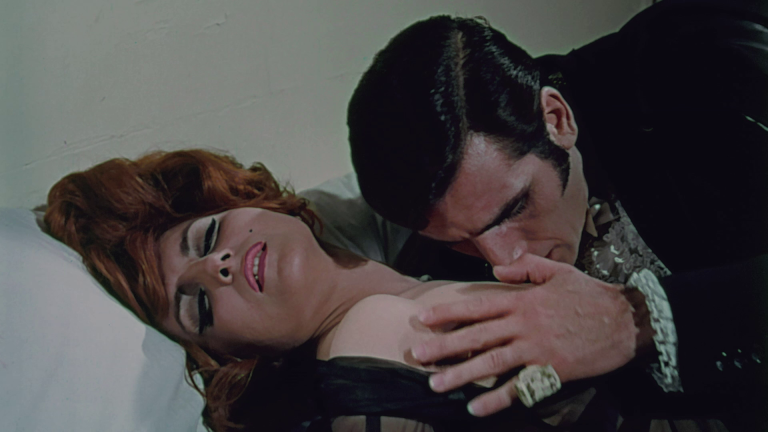
Vampires are folkloric creatures who feed on the vitality of the living, usually by consuming their blood. Most cultures around the world feature some sort of vampire legend. The term “vampire” itself gained traction in Western Europe in the early 1800s after repeated reports of mass panics about blood-sucking humanoids in Eastern Europe from the 1700s.

Up until the early 1800s, vampires were typically depicted as bloated and red-colored. It wasn’t until the publication of the 1819 story “The Vampire” by English writer John Polidori that vampires assumed the thin, pale, and often sensuous character that permeates vampire lore in most modern depictions.
The most successful vampire novel of all time, and the one from which nearly all modern vampiric themes in popular culture spring, is Irish writer Bram Stoker’s 1897 novel Dracula. Although many believe that Stoker based his character on historical figures such as Vlad the Impaler and Countess Elizabeth Bathory, a survey of Stoker’s notes for Dracula finds that neither character was mentioned. It is thought that he used the name “Dracula” because he mistakenly thought it was the Romanian word for “devil.”
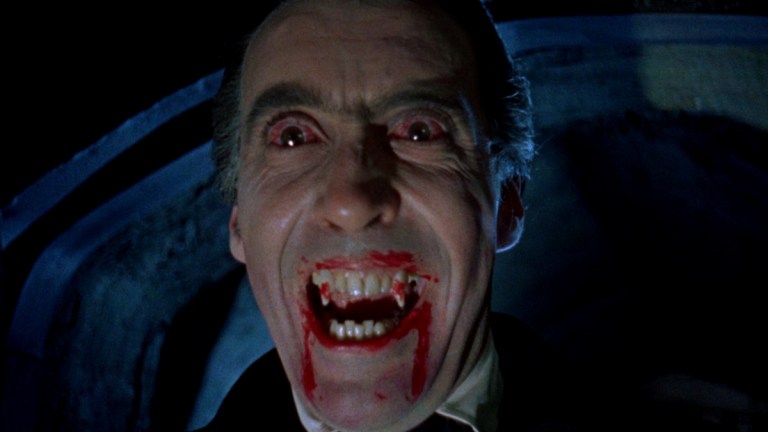
Contrary to popular misconceptions, the first film to feature Count Dracula as a character was neither 1922’s Nosferatu nor 1931’s Dracula featuring Bela Lugosi in the title role. Instead, it came with the 1921 Austrian-Hungarian film Drakula halála, often translated as Dracula’s Death, which was released in Vienna and throughout Europe before disappearing. It is assumed to be a completely lost film.
What follows, then, is not a catalog of films about vampires; it is a list of the most prominent films to feature the character of Count Dracula as a vampire.
Old Dracula Movies
Nosferatu (1922)

Released in Germany as Nosferatu, eine Symphonie des Grauens (Nosferatu: A Symphony of Horrors), this classic silent film is still considered by many to be one of the best and scariest renderings of the Dracula legend. Director Werner Herzog, who remade it in 1979, calls it the greatest German film ever made.

The idea to make the film came to producer Albin Grau in 1916 after while serving in Serbia during World War I and becoming enraptured listening to local vampire legends. He launched a film company named Prana and hired director F.W. Murnau to make the film. Murnau cast the intensely creepy-looking actor Max Schreck—with his bald head, huge ears, severe overbite, and long fingernails—to play the lead vampire.
But when producers approached Bram Stoker’s widow to purchase the copyright, they were rebuffed. Midway through the film’s making, they hurriedly attempted to make major changes in order to avert a lawsuit—Count Dracula’s name was changed to Count Orlok, and the film was reset in Germany during the 1830s instead of England in the 1890s. But their efforts were in vain, as Stoker’s widow successfully sued Prana and achieved a court order to have all extant copies of the film burned.
And all of the copies were burned, except one—the one that had made it to America, where due to a legal technicality, the copyright to Stoker’s novel had already expired. All copies of Nosferatu that exist were made from that one print that escaped the wrath of Bram Stoker’s widow.
Dracula (1931)
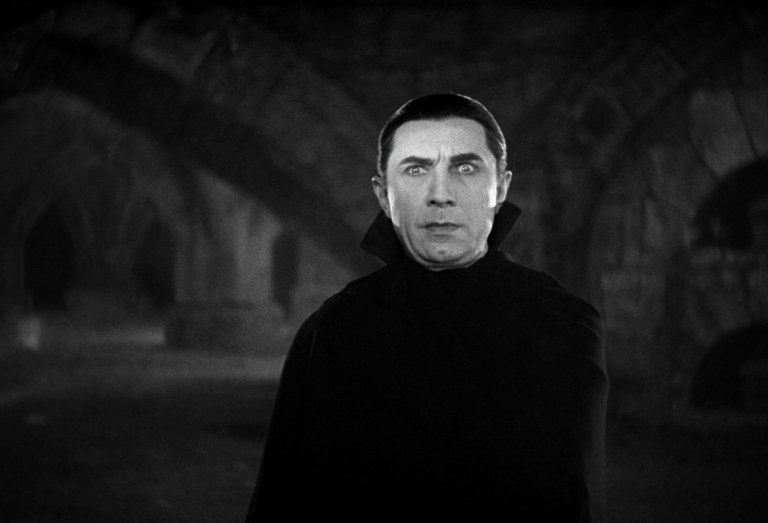
Directed by Tod Browning (who would make the highly disturbing Freaks the following year), this film by Universal Horror stars Bela Lugosi in the role that would make him an icon but also typecast him for the rest of his life, all the way to a brief role as Dracula shortly before his death in 1959’s Plan 9 From Outer Space. His performance became the template for all subsequent tellings of the Dracula legend and in the opinion of many has still never been matched. Unlike Nosferatu, its characters are faithful to the names in Stoker’s novel—Count Dracula, Dr. Abraham Van Helsing, John Harker, and Mina Seward. A review in Variety noted the effective casting of Lugosi: “”It is difficult to think of anybody who could quite match the performance in the vampire part of Bela Lugosi, even to the faint flavor of foreign speech that fits so neatly.”
Horror of Dracula (1958)
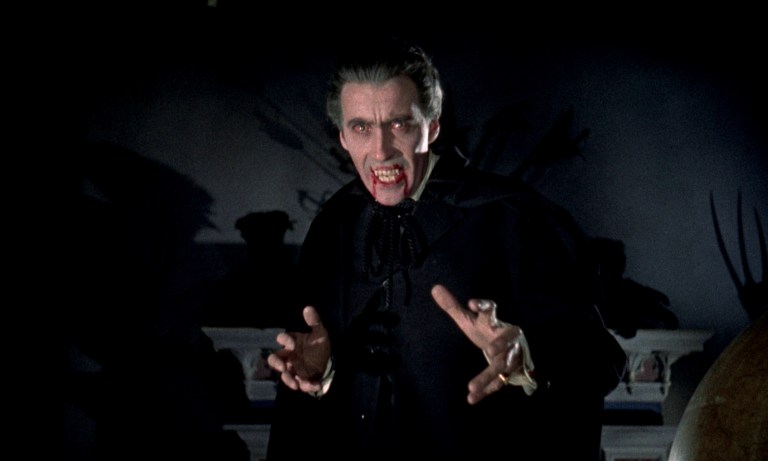
No film studio got more traction from the Dracula legend than England’s Hammer Horror, and this 1958 film—released in the UK simply as Dracula but in the USA as Horror of Dracula to avoid confusion with the 1931 Tod Browning classic—is the first of eight Hammer films centering on Dracula and seven starring Christopher Lee as the Count himself. The film would also mark the first of four appearances by Peter Cushing as Dracula’s nemesis, Doctor Van Helsing. Lee’s innovations to the Dracula character were his emphasis on prominent fangs as well as a smoldering sensuality which the actor describes thusly: “He had also to have an erotic element about him (and not because he sank his teeth into women)….It’s a mysterious matter and has something to do with the physical appeal of the person who’s draining your life. It’s like being a sexual blood donor….Women are attracted to men for any of hundreds of reasons. One of them is a response to the demand to give oneself, and what greater evidence of giving is there than your blood flowing literally from your own bloodstream? It’s the complete abandonment of a woman to the power of a man.”
The Brides of Dracula (1960)
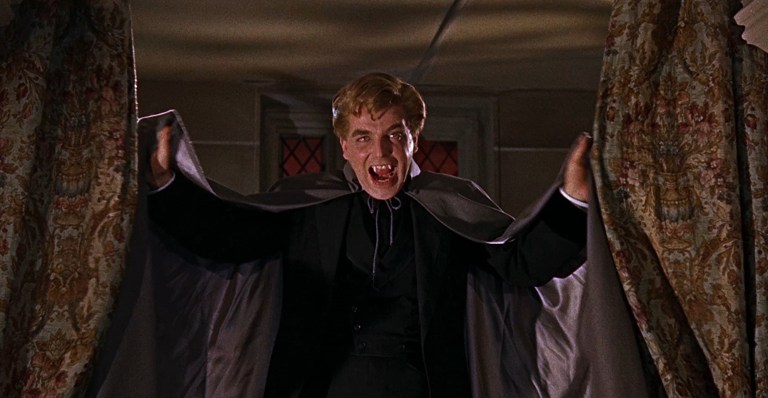
Christopher Lee does not appear in this sequel to Horror of Dracula, although Peter Cushing returns as the vampire hunter Dr. Van Helsing. The plot revolves around a beautiful young schoolteacher named Marianne Danielle (Yvonne Monlaur), who mistakenly believes that a handsome young man named Baron Meinster is being held captive by his mother for no other reason than maternal cruelty. What Marianne doesn’t realize is that Baron Meinster is a vampire, and once she releases him from his mother’s chains, bodies start disappearing throughout the Transyvlanian countryside.
Billy the Kid vs. Dracula (1966)
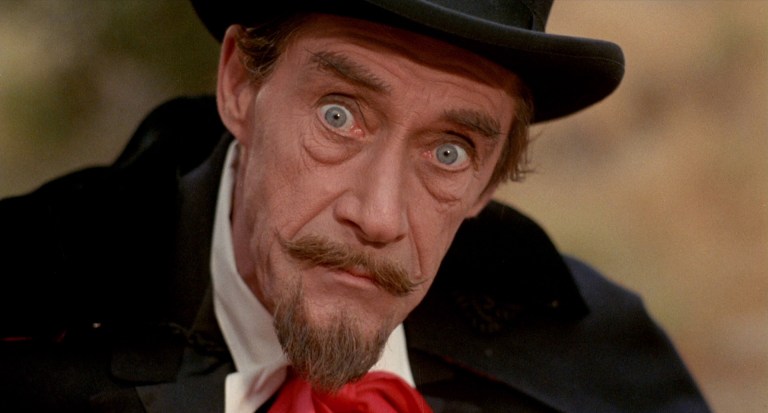
Director William Beaudine had a long career in Hollywood as both an actor and a filmmaker. His final two films were Billy the Kid vs. Dracula and Jesse James Meets Frankenstein’s Daughter, both released in 1966 and both oddly fusing the legends of European monsters with real-life folk heroes from the American West. Veteran actor John Carradine stars as the Count, who travels by stagecoach out West with the intent of making a beautiful young blonde woman his next victim. En route, he seduces and kills a Native American woman (played by actress Charlita), causing the emergence of further violent tension between Natives and European settlers. But the Count’s final clash comes with Billy the Kid (Chuck Courtney), the famous American gunslinger who wants the blonde girl all to himself.
Santo in the Treasure of Dracula (1969)
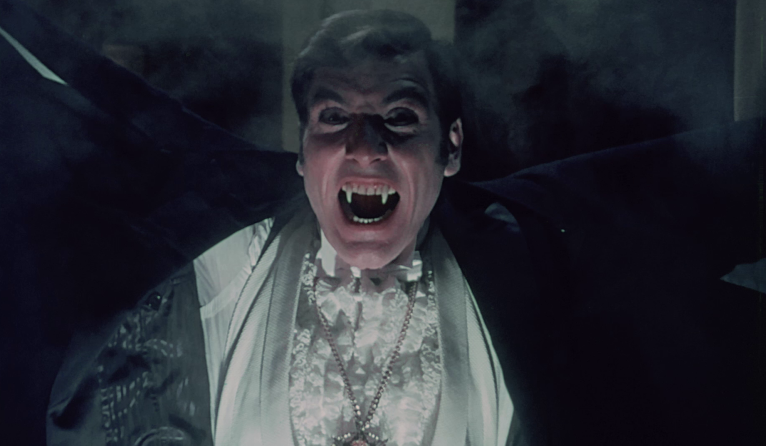
El Santo was a famous Mexican wrestler who also starred in a series of films. As was the Mexican tradition in the late 1950s and into the 1970s, wrestling and horror were often mixed in the same film. Another odd feature of Mexican films is that they were often made in two versions—one family-safe, and the other drenched with sex. Released in Mexico as Santo en El tesoro de Drácula (Santo and Dracula’s Treasure), this installment in the Santo canon finds our masked hero using a time machine to find Dracula’s hidden treasure and use it to help fund a boarding school for impoverished children. The alternate adults-only version, El Vampiro y el sexo, was not discovered and released to the public until 2011.
Scars of Dracula (1970)
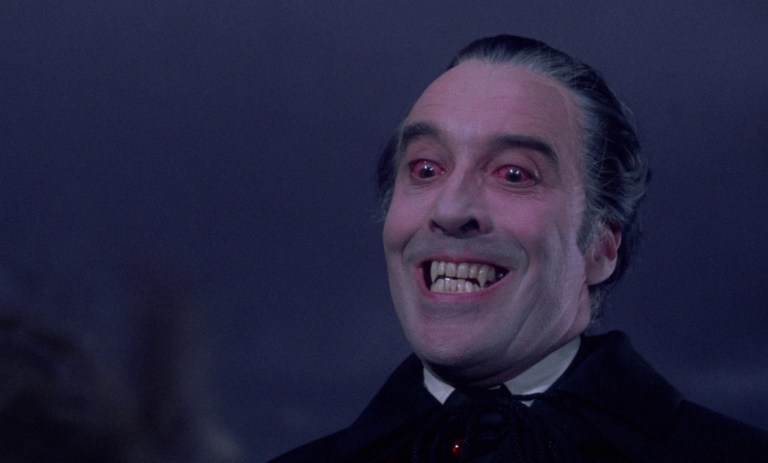
In this, the sixth in Hammer’s Dracula series and the fifth to star Christopher Lee, a young vacationing man named Paul Carlson (Christopher Matthews) ends up spending a night at the castle of Count Dracula, where he is murdered. His brother Simon (Dennis Waterman) makes it his mission to visit the town near Dracula’s castle where all traces of his brother’s existence ended and solve the murder. To fend off angry villagers, Dracula employs his army of bats to bite the women and children whose husbands and fathers burned down his castle. Scars of Dracula was one of an astounding four Dracula films starring Christopher Lee in 1970.
Blacula (1972)

In this fusion of horror and blaxploitation, William Marshall stars in the title role as an African prince from the 1700s who had petitioned Count Dracula to help him end the slave trade, only to be turned into a vampire and entombed in a coffin on the Count’s estate. Fast-forward to the year 1972, and two gay interior designers from the USA purchase Blacula’s coffin and have it sent to LA, where Blacula awakes from the dead and starts killing everything in sight. A sequel, Scream Blacula Scream, was made in 1973. The same year, the film Blackenstein sought to capitalize on this brief horror/blaxploitation craze.
Dracula A.D. 1972 (1972)
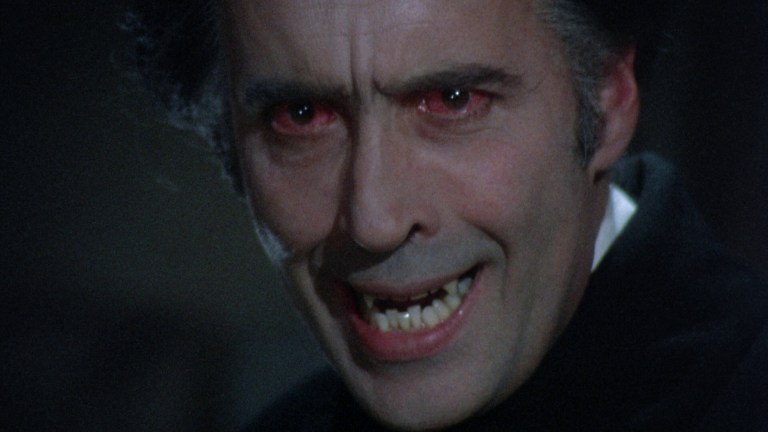
Set in the swinging hippie milieu of London in the early 1970s, this Hammer Horror production brings back Christopher Lee as Dracula for the sixth time. After being killed in an altercation with Van Helsing in 1872, Dracula is resurrected a century later by his acolyte Johnny Alucard, who revives him using a small vial of the vampire’s ashes. Once alive again, Dracula begins preying on the hippie descendants of his archnemesis Van Helsing.
The Satanic Rites of Dracula (1973)
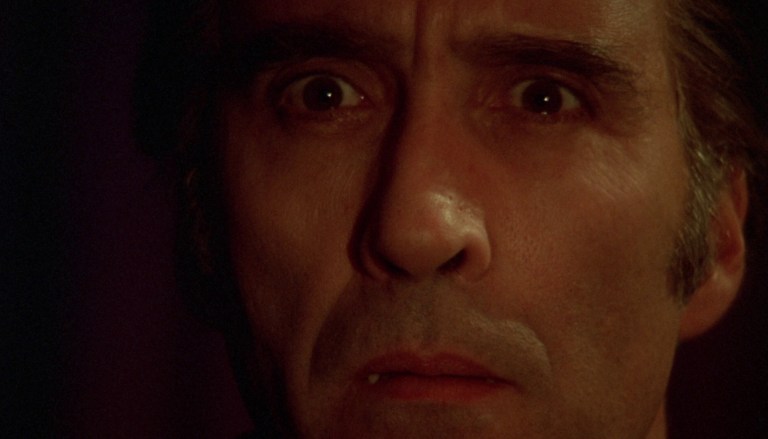
Perhaps capitalizing on both the success of the Dracula franchise as well as the same year’s The Exorcist, this—the seventh and final film to feature Christopher Lee as Dracula—is set two years after Dracula A.D. 1972 and focuses on rumors that the Count, disguising his identity in the persona of a property developer, is seeking to end the world by unleashing the bubonic plague upon humanity. Intrigued by rumors of satanic rites being performed by the owner of a property built above where Dracula died in the previous film, British intelligence officials seek to thwart the legendary vampire’s sinister plot.
Blood for Dracula (1974)
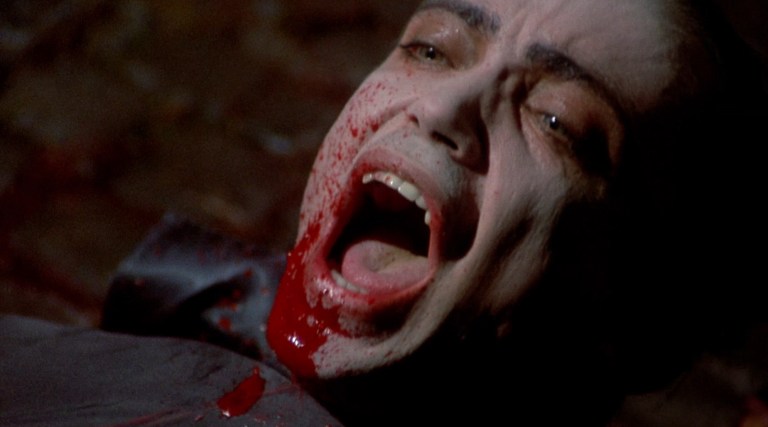
Written and Directed by Warhol associate Paul Morrissey, this film was released in the USA as Andy Warhol’s Dracula to capitalize on the fame and notoriety of the legendary pop artist. It stars Udo Kier as Count Dracula, who is growing weak due to the fact that he needs virgins’ blood on which to survive, and the increasingly promiscuous cultural environment means there are few virgins to be found. On the advice of his assistant, he travels to Italy, encouraged at the idea that it is a strictly Catholic country and that most of the nation’s young ladies are virgins. However, when he befriends a family with four young daughters, he realizes to his dismay that they are not as chaste as they originally appeared. But Dracula must find virgin’s blood quickly, or he his doomed to be impaled on a wooden stake by an adversarial communist fanatic.
Dan Curtis’ Dracula (1974)
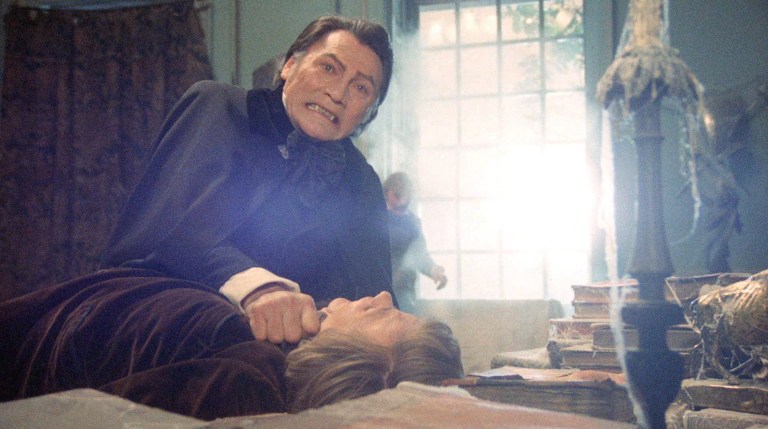
This TV movie was produced in England with the title Bram Stoker’s Dracula but became known in America as Dan Curtis’ Dracula because Curtis had produced the hit TV vampire soap opera Dark Shadows in the late 1960s and early 1970s starring Jonathan Frid in the vampiric role of Barnabas Collins. Veteran character actor and legendary Hollywood tough guy Jack Palance stars as Dracula. The film’s original intended American showing in February 1974, though, was preempted by a live announcement by then-President Richard Nixon that his Vice President Spiro Agnew had resigned. To recoup some of their original losses, CBS re-broadcast the film in November of 1992, only two weeks after the theatrical premiere of Francis Ford Coppola’s film version of Bram Stoker’s Dracula.
Zoltan, Hound of Dracula (1977)
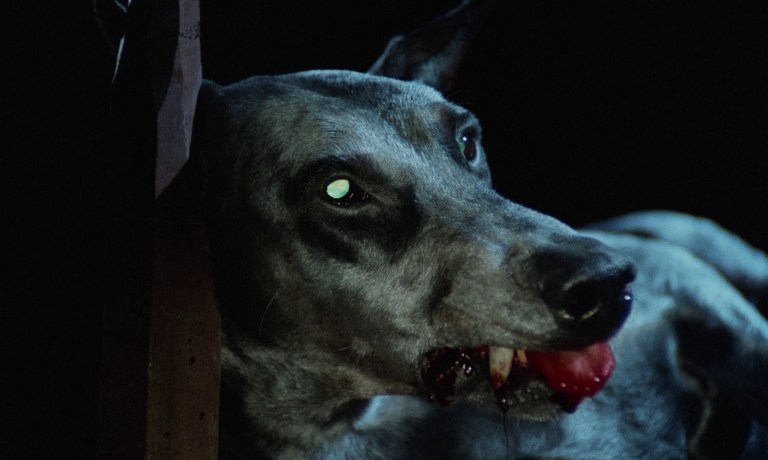
Also released as Dracula’s Dog, this odd production tosses canines and communism into the Dracula legend. The story begins in 1670, when a Doberman Pinscher named Zoltan was bitten by Count Igor Dracula and thus became a vampire dog. While excavating ruins in Romania, communist soldiers accidentally release a vampire servant of Dracula’s as well as Zoltan. The two travel to America in search of Count Dracula’s last living descendant, but their travels are interrupted by a vampire hunter.
Nosferatu The Vampyre (1979)
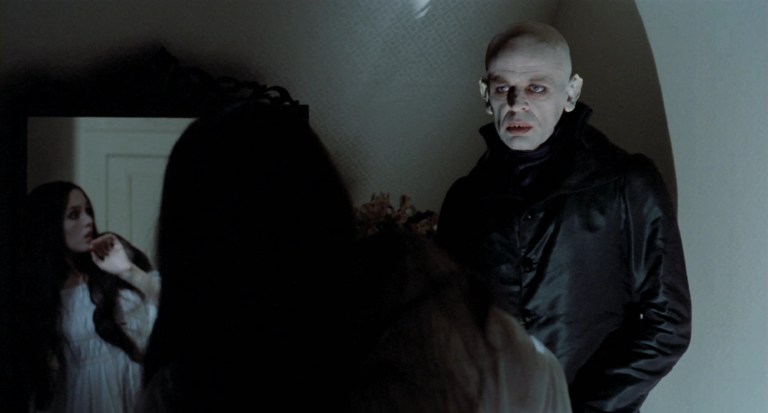
This film by legendary German director Werner Herzog is superficially a remake of 1922’s silent classic of the same name, but since by 1979 the copyright had expired on Bram Stoker’s novel, Herzog was allowed to make the film using all of the names and settings from the original novel. With his bald head and pointed ears, Klaus Kinski—who had played Renfield in the 1970 film Count Dracula—emulates the look of Max Schreck’s 1922 vampire as he spreads the Black Plague across Transylvania. One reviewer called the film “An unusually contemplative version of Dracula, in which the vampire bears the curse of not being able to get old and die.” Commenting on his notoriously ill-mannered lead actor, Herzog said that the thousands of rats he used in the film’s making behaved better than Klaus Kinski did.
New Dracula Movies
The Monster Squad (1987)

In this lighthearted kids’ comedy, Count Dracula—accompanied by Frankenstein’s Monster, the Mummy, the Wolfman, and the Creature From the Black Lagoon—return to a small town in search of a magical amulet that, if found, will enable the Count to destroy the world. The only thing stopping him is a group of young kids, all of them fans of monster movies, who team together to protect their town from the forces of evil.
Bram Stoker’s Dracula (1992)
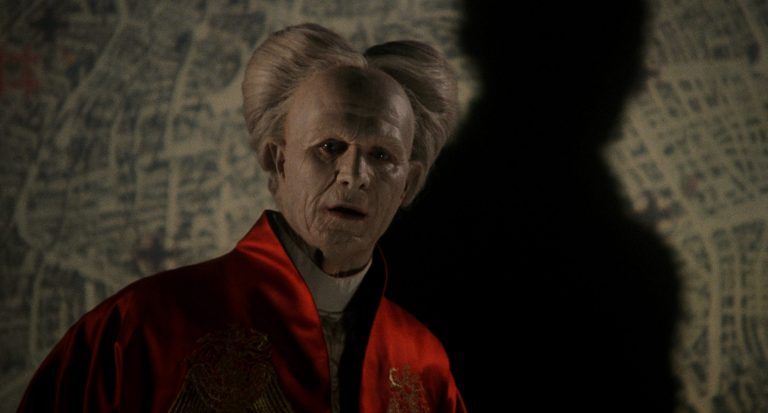
This Gothic horror film by famed director Francis Ford Coppola (the Godfather films) features Gary Oldman as the Count, Anthony Hopkins as Professor Van Helsing, Keanu Reeves as Jonathan Harker, and Winona Ryder as Mina Harker. Of all the main actors, Reeves was singled out for criticism based on what was perceived to be a grossly inaccurate English accent. But the film won three Academy Awards—Best Sound Editing, Best Costume Design, and Best Makeup—and was a smashing success, taking in receipts of $216 million on a budget of $40 million.
Dracula: Dead and Loving It (1995)
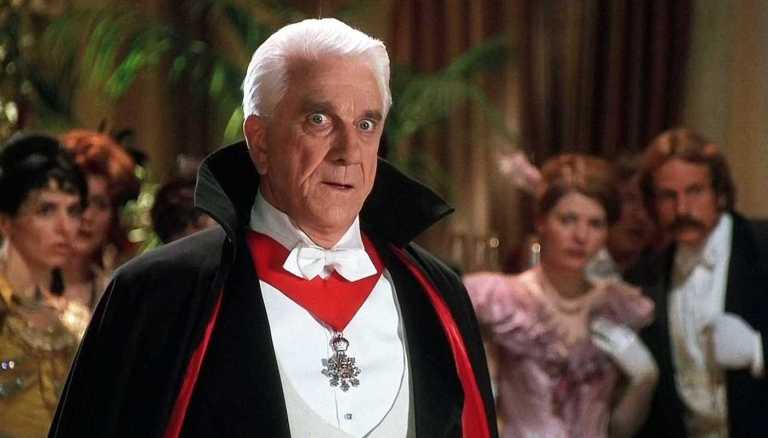
Comedy genius Mel Brooks made a career with his broad parodies of film genres. In Blazing Saddles, he lampooned the Western. Young Frankenstein was his comedic take on the classic black-and-white Boris Karloff film. High Anxiety was a spoof of Hitchcock movies. In Dracula: Dead and Loving It, Brooks finally got around to satirizing all of the vampire movies that had preceded it. Leslie Nielsen stars as the Count, and Brooks stars as Van Helsing, whose accent is so thick that the other characters often have trouble understanding what he’s saying.
Dracula 3D (2012)
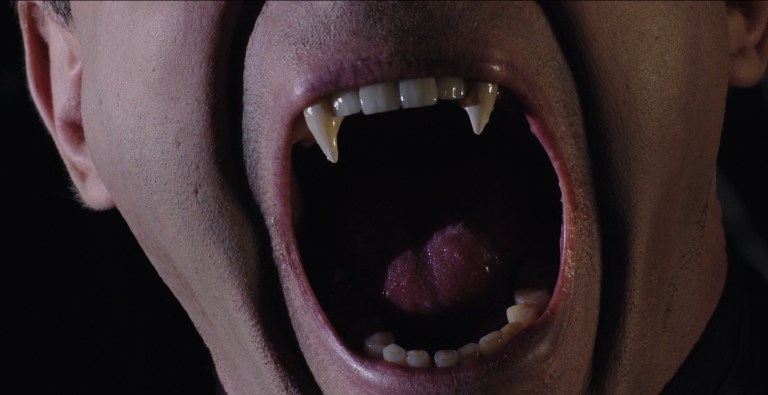
In this film by legendary Italian giallo director Dario Argento that was also released as Dario Argento’s Dracula, Thomas Kretchmann stars in the title role, Rutger Hauer portrays Van Helsing, and Argento’s daughter Asia portrays Lucy Kisslinger, best friend of Jonathan Harker’s wife Mina. Reviews were generally negative, though, with TV Guide’s Jason Buchanan writing, “despite some attractive costumes and sets, Argento’s Dracula is a sparse, cheap-looking movie, with visual effects that would have been rejected on Buffy the Vampire Slayer.”
Dracula Untold (2014)

Romanian national hero Vlad the Impaler was known as Vlad Draculea in the Romanian language. He became a national hero due to his fierce opposition to the Ottoman Empire that held much of Europe in its thrall during the Middle Ages. He acquired the nickname “Vlad the Impaler” from his practice of impaling his enemies and leaving their countless speared bodies rotting out in the war-torn battlefield for all to see.
This 2014 film roots the Dracula legend in the real-life story of Vlad the Impaler rather than in Bram Stoker’s fictional character. It stars Luke Evans as Vlad Draculea, who repels invading Turkish forces not only with brute force, but by using the counsel of a Romanian cave vampire as well as hordes of feral bats. Although he spares Europe from the Ottoman conquerors, Vlad loses his life in battle—or at least he appears to die. The film then abruptly switches to modern London, where Vlad has fully transformed into the easily recognizable persona of Dracula.
Dracula (2020)

Rather than a feature theatrical film, this was a three-part BBC miniseries based on the Stoker novel and featuring Claus Bang in the title role and Dolly Wells as Sister Agatha. The episodes, which aired over three consecutive nights from January 1-3, 2020, were titled “The Rules of the Beast,” “Blood Vessel,” and “The Dark Compass.” The series was then released on Netflix on January 4, 2020. Reviews were generally positive, and as of 2021, the filmmakers have been hinting at a sequel.
Renfield (2023)
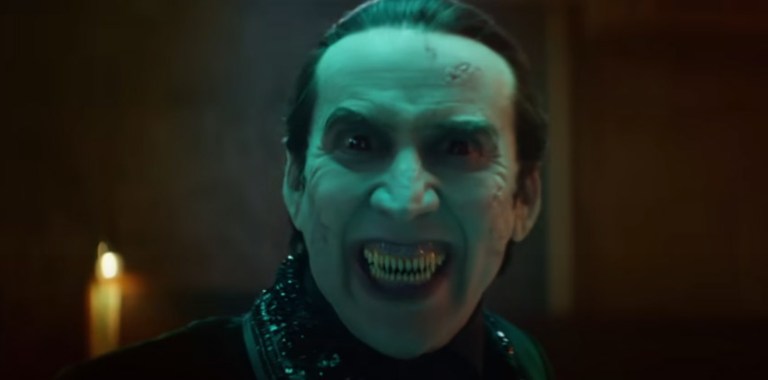
Set in modern times, Nicholas Hoult plays the title character Renfield, Dracula’s hapless servant. After years of being controlled by the nefarious Count, Renfield finally decides to try to break free of Dracula’s control.
More Dracula Movies
Here are some other films that are inspired by the mythos of Dracula or that are more vampire movies but often are grouped as Dracula cinema.
- Dracula’s Daughter (1936) is a sequel to Dracula with lesbian undertones starring Gloria Holden as the Count’s vampiric daughter.
- Son of Dracula (1943) stars Lon Chaney, Jr. as the evil Count’s son, who vows to honor and perpetuate his father’s legacy.
- House of Dracula (1945) stars John Carradine as Dracula alongside Lon Chaney, Jr. as the Wolfman, both of whom long to be freed from the curse that enslaves them as monsters.
- Abbott and Costello Meet Frankenstein (1948) features the comedy duo as they encounter Boris Karloff as Frankenstein, Lon Chaney, Jr. as the Wolfman, and Bela Lugosi reprising his role as Dracula.
- Dracula and Son (1976) showcases the two title characters heading to the big city, with the son attempting to shake off the curse and legacy bequeathed to him by his father.
- Vampyros Lesbos (1971) is a lesbian vampire movie with a psychedelic soundtrack loosely based on the story of Dracula.
- Vampire in Venice (1988) a professor visits Venice, Italy to research the infamous appearance of the vampire Nosferatu during a 1786 carnival.
- Dracula Rising (1993) is an often overlooked 90s film about a researcher discovering her boss is Dracula.
- Shadow of the Vampire (2000) recreates the making of 1922’s Nosferatu with John Malkovich as F. W. Murnau, who can’t seem to explain why cast members start disappearing.
- Dracula: The True Story (2007) is a documentary set in Transylvania that explores the Romanian folk legends that gave rise to the Dracula story.
- Vamps (2012) Alicia Silverstone and Krysten Ritter are two vampires live laugh loving in New York City in this Amy Heckerling horror comedy.
- Hotel Transylvania (2012) is an animated comedy about a hotel resort where no humans are allowed and monsters are permitted to escape the daily drudgery of being monsters.
- Sharkula (2022) – Dracula passes his vampiric curse to a shark in this goofy no-budget flick.
